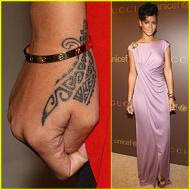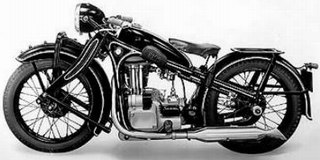Sejarah
BAKOSURTANAL atau Badan Koordinasi Survei dan Pemetaan Nasional terletak di Kompleks Cibinong Science Center Jalan Raya Jakarta Bogor km. 46 Cibinong, Bogor. Badan atau organisasi yang bertugas melaksanakan survei dan pemetaan ini memiliki beberapa fungsi, yaitu: (1) pengkajian dan penyusunan kebijakan nasional di bidang survei dan pemetaan; (2) pembangunan infrastruktur data spasial nasional; (3) koordinasi kegiatan fungsional dalam pelaksanaan tugas; (4) pemantauan, pemberian bimbingan, dan pembinaan terhadap kegiatan instansi pemerintah di bidang survei dan pemetaan nasional; dan (5) pelaksanaan pembinaan dan pelayanan administrasi umum di bidang perancaan umum, ketatausahaan, organisasi dan tata laksana, kepegawaian, keuangan, kearsipan, hukum, persandian, perlengkapan, dan rumah tangga.
Badan Koordinasi Survei dan Pemetaan Nasional sebenarnya mulai dirintis pada masa pemerintahan Hindia Belanda pada tahun 1938. Waktu itu, agar tidak terjadi kesemrawutan karena terdapat banyak jawatan pengukuran, Belanda menyatukannya menjadi satu badan yang disebut Permante Kaarterings-Commissie (Komisis Tetap untuk Pemetaan).
Namun karena dianggap tidak dapat memenuhi harapan semula, melalui Gouverments Besluit van 17 January 1948 (Keputusan Pemerintah No. 3 tanggal 17 Januari 1948) Permante Kaarterings-Commissie dibubarkan dan dibentuk badan baru yang diberi nama Raad en Directorium voor het Meet en Kaarterwezen in Nederland Indies (Dewan dan Direktorium untuk Pengukuran dan Pemetaan Hindia Belanda).
Setelah ada pengakuan kedaulaatan dari Kerajaan Belanda, melalui PP No. 71 tahun 1951 pemerintah Republik Indonesia membubarkan Raad en Directorium voor het Meet en Kaarterwezen in Nederland Indies dan menggantinya dengan Dewan dan Direktorium Pengukuran dan Penggambaran Peta. Badan baru ini sebenarnya memiliki tugas pola organisasi yang sama seperti bentuan Hindia Belanda, yaitu membuat kebijakan dan pengambilan keputusan, sedangkan pelaksananya adalah Direktorium.
Lima belas tahun kemudian, karena kinerjanya dinilai lamban dan koordinasinya tidak berfungsi lagi, Dewan dan Direktorum Pengukuran dan Penggambaran Peta dibubarkan dan dibentuk dua organisasi baru bernama Komando Survei dan Pemetaan Nasional (Kosurtanal) serta Dewan Survei dan Pemetaan Nasional (Desurtanal), melalui Keppres No. 263 tahun 1965 tanggal 2 September 1965.
Selama beberapa tahun sejak didirikan ternyata kinerja Desurtanal dan Kosurtanal tidak seperti yang diharapkan sehingga dibentuk sebuah organisasi baru yang khusus untuk menangani survei dan pemetaan nasional. Organisasi baru ini dinamakan BAKOSURTANAL (Badan Koordinasi Survei dan Pemetaan Nasional) yang dibentuk berdasarkan Keppres No. 63 tahun 1969 tanggal 17 Oktober 1969.
Pertimbangan dibentuknya BAKOSURTANAL diantaranya adalah: (1) perlu adanya koordinasi dalam kegiatan dan pelaksanaan tugas surta (survei dan pemetaan) sehingga dapat tercapai adanya efisiensi serta penghematan pengeluaran keuangan negara; dan (2) terkait dengan itu, dalam rangka penertiban aparatur pemerintahan, dipandang perlu untuk meninjau kembali kedudukan tugas dan fungsi badang-badang yang melakkan kegiatan surta untuk dipersatukan dalam suatu badan koordinasi surta nasional.
Adapun visinya adalah sebagai pusat data dan informasi geospasial secara nasional dan mudah diakses pada tahun 2025. Sedangkan misinya adalah: (1) mewujudkan penyelenggaraan informasi geospasial yang tersandar; (2) membangun data dan informasi geospasial dasar dan informasi geospasial tematik sesuai kebutuhan nasional yang dapat dipertanggungjawabkan serta mudah diakses; (3) mewujudkan jaringan informasi geospasial antarsimpul jaringan yang andal; dan (4) meningkatkan kapasitas sumber daya manusia, kualitas penelitian dan pengembangan dalam penyelenggaraan data dan informasi geospasial.
Perpustakaan BAKOSURTANAL
Agar menunjang operasionalisasi BAKOSURTANAL tentu diperlukan sarana dan prasarana yang memadai. Salah satu diantaranya adalah perpustakaan yang menyediakan buku-buku bagi para karyawan sebagai bahan referensi pembuatan data dan informasi geospasial. Untuk itu BAKOSURTANAL juga menyediakan sebuah gedung perpustakaan sendiri yang cukup megah dan letaknya terpisah dari gedung lainnya agar karyawannya dapat dengan mudah mengakses informasi dari buku-buku atau buletin-buletin yang telah diterbitkan oleh BAKOSURTANAL sendiri maupun oleh orang atau lembaga lain.
Perpustakaan BAKOSURTANAL ini awalnya bukanlah suatu perpustakaan, melainkan hanya berupa kumpulan koleksi buku dengan jumlah yang sangat terbatas. Seiring dengan berjalannya waktu, koleksi tersebut semakin hari semakin bertambah sehingga dirasa perlu penanganan khusus sesuai dengan sistem perpustakaan umum. Oleh karena itu, pada tahun 1986 Prof. Jacub Rais (Ketua BAKOSURTANAL waktu itu) mengeluarkan Surat Keputusan No: 006.2.8/vii/1986 tanggal 21 Juli 1986 yang isinya menjadikan perpustakaan satu unit kerja tersendiri di bawah Pusat Pembinaan dan Pengembangan Tenaga Survei dan Pemetaan (Pusbinbangga Surtan) dengan nama Bidang Perpustakaan dan Dokumentasi Informasi Ilmiah.
Ketika terjadi reorganisasi di dalam tubuh BAKOSURTANAL berdasarkan Surat Keputusan Ketua BAKOSURTANAL No.KP.02.0/IV/1991 yang mengganti nama Pusbinbangga Surtan menjadi Pusat Pendidikan dan Latihan (Pusdiklat), Bidang Perpustakaan dan Dokumentasi Informasi Ilmiah juga turut disederhanakan menjadi Bidang Perpustakaan.
Pada tahun 1997 saat struktur organisasi operasional BAKOSURTANAL dirombak berdasarkan SK Ketua No.OT.01/02-KA/V/1997 tanggal 5 Mei 1997, Bidang Perpustakaan ikut dirombak dan berganti nama lagi menjadi Sub Bidang Pengembangan Perpustakaan. Keputusan ini ternyata tidak berjalan lama. Pada tahun 1988 terjadi lagi perubahan struktur organisasi BAKOSURTANAL berdasarkan Keputusan Presiden No. 87 tahun 1998 dan Keputusan Ketua No.OT.00/08-KA/XII/1998 tentang Organisasi dan Tata Kerja Balai Diklat Survei dan Pemetaan BAKOSURTANAL. Bidang Perpustakaan pun lebih disederhanakan lagi dan menjadi bagian dari Seksi Sarana Diklat di bawah Balai Diklat Survei dan Pemetaan BAKOSURTANAL.
Struktur Organisasi Perpustakaan BAKOSURTANAL
Struktur organisasi perpustakaan BAKOSURTANAL yang saat ini berada di bawah Pusyanjasinfo, terdiri dari Kepala Balai Diklat yang membawahi Kepala Seksi Sarana Diklat, kelompok penanggung jawab kegiatan perpustakaan, penanggung jawab katalogisasi dan klasifikasi, pelayanan sirkulasi, digitalisasi perpustakaan, dan IT perpustakaan.
Adapun personil-personilnya adalah: Kepala Balai Diklat dijabat oleh Ir. Andi Rinaldi; Kepala Seksi Sarana Diklat dijabat oleh Rizka Windiastuti, MIT; Penanggung Jawab Kegiatan Perpustakaan oleh E. Faridl, S.Sos, MM; Katalogisasi dan Klasifikasi oleh Sumaryanti, A.Md dan Desi Rastanida, Amd; Pelayanan Sirkulasi oleh Wahyuadiningsih, A.Md; Digitalisasi Persputakaan oleh Roriana Hanani, S.S; dan IT Perpustakaan oleh Dana Mulyana.
Visi dan Misi
Visi Perpustakaan BAKOSURTANAL adalah menjadi sebuah perpustakaan yang mampu mengelola informasi pustaka bidang survei dan pemetaan nasional serta mampu memberikan pelayanan yang cepat tepat dan berkesinambungan dengan kekuatan sumber daya manusia yang profesional. Sedangkan misinya adalah memberikan pelayanan informasi pustaka yang cepat, tepat, dan akurat, serta menyediakan SDM perpustakaan yang kompeten dan profesional dalam rangka mewujudkan perpustakaan khusus yang modern.
Fasilitas Perpustakaan
Fasilitas penunjang, baik gedung maupun perlalatan dan perlengkapan yang dimiliki oleh Perpustakaan BAKOSURTANAL tergolong lengkap. Gedung perpustakaan memiliki ruang-ruang yang digunakan untuk berbagai macam keperluan, seperti: ruang pegawai, ruang pengolahan, ruang baca, ruang referensi, ruang fotokopi, dan ruang penunjang lainnya. Sedangkan perlengkapan yang dimiliki, diantaranya adalah: beberapa buah perangkat computer, printer, rak buku, meja dan kursi baca, audio visual, lemari/laci katalog, dan perlengkapan lainnya.
Tugas dan Fungsi
Perpustakaan Bakosurtanal mempunyai tugas pokok menyelenggarakan kegiatan pembinaan perpustakaan dan dokumentasi pustaka dalam bidang survey dan pemetaan serta bidang lain yang berkaitan dalam menunjang tugas pokok Bakosurtanal.
Adapun fungsinya adalah sebagai suatu unit kerja yang dapat membantu kelancaran kerja para warga (pimpinan, peneliti dan karyawan) Bakosurtanal dalam melaksanakan tugasnya.
Jenis Layanan
Jenis layanan yang diberikan oleh Perpustakaan BAKOSURTANAL bersifat open access (pelayanan terbuka) yang dapat dibagi menjadi beberapa macam, yaitu:
1. Layanan Sirkulasi
Pelayanan yang diberikan kepada pengguna yang akan meminjam dan mengembalikan bahan pustaka.
2. Layanan bimbingan pembaca
Pelayanan yang diberikan oleh perpustakaan untuk membantu pengguna agar dapat menggunakan sarana perpustakaan secara efektif dan efisien.
3. Layanan informasi kilat/kesiagaan informasi
Merupakan jasa yang diberikan untuk menyebarluaskan informasi terbaru yang ada di perpustakaan dengan cara mengirimkan fotocopy daftar isi majalah atau buku ke setiap unit kerja.
4. Layanan penelusuran informasi
Pelayanan penelusuran informasi diberikan pada pengunjung untuk membantu dalam mencari informasi yang dibutuhkan, baik secara manual melalui catalog atau melalui pangkalan data komputer dengan menggunakan program CDS/ISIS yang mulai dikembangkan sejak tahun 1992 bekerja sama dengan Perpustakaan IPB dan STT Telkom.
5. Layanan penerbitan
Agar pengunjung atau anggota perpustakaan memperoleh data yang up to date, pihak perpustakaan juga menerbitkan: (a) Bibliografi Penambahan Koleksi yang diterbitkan setiap 6 bulan sekali memuat daftar penambahan koleksi yang diterima perpustakaan melalui pembelian, hadiah, dan tukar menukar; (b) Bibliografi Khusus berupa daftar koleksi perpustakaan dalam bidang ilmu tertentu berdasarkan kebutuan para pengguna Bibliografi ini diperoleh dari berbagai tulisan ilmiah, baik buku, majalah, prosiding maupun laporan survei dan pemetaan, Bibliografi Sari Laporan Hasil Survei dan Pemetaan, serta katalog buku. Sampai tahun 2011 bibliografi khusus yang telah diterbitkan adalah Bibliografi Khusus Fotogrametri, Bibliografi Khusus Penginderaan Jauh, Bibliografi Khusus Kartografi, dan Bibliografi Khusus Sistem Informasi Geografi (SIG); dan (c) Bibliografi Sari Laporan Hasil Survei dan Pemetaan yang diterbitkan untuk menginventarisasi dan menyebarluaskan informasi hasil-hasil survei, pemetaan, dan penelitian; (d) Bibliografi dan Abstraksi Makalah Ilmiah Survei dan Pemetaan; (e) katalog buku perpustakaan; dan (f) Direktori Hasil Penelitian, Survei, dan Pemetaan Sumberdaya alam di Indonesia (khusus provinsi Jawa Barat, Jawa Tengah, D.I. Yogyakarta, dan Jawa Timur).
6. Layanan fotokopi
Jasa fotokopi disediakan oleh perpustakaan untuk memperlancar pelayanan yang diberikan kepada pengguna yang tidak bias meminjam bahan pustaka.
7. Layanan Jasa Bimbingan kepada siswa/mahasiswa yang sedang melakukan Praktek Kerja Lapangan (PKL) di BAKOSURTANAL. Tujuan dari bimbingan diantaranya adalah: (a) agar menambah wawasan siswa/mahasiswa terhadap masalah-masalah yang terjadi di luar bangku sekolah atau kuliah, (b) menyiapkan siswa/mahasiswa agar lebih memahami kondisi pekerjaan yang sesungguhnya; (c) melatih untuk berfikir kritis pada metode-metode pekerjaan antara teoretis dan praktek kerja di lapangan; (d) memberi kesempatan bagi siswa untuk mempelajari keterampilan dan pengetahuan baru melalui kegiatan kerjasama dengan orang-orang yang telah berpengalaman; dan (e) dapat menerapkan pengetahuan dan keterampilan yang telah diperoleh di sekolah. Sedangkan, manfaat bagi Perpustakaan sendiri adalah untuk memperoleh informasi dan masukan baru mengenai layanan yang sedang dikembangkan.
8. Layanan jasa kepengurusan ISBN bagi terbitan BAKOSURTANAL yang merupakan kerja sama dengan Perpustakaan Nasional.
9. Layanan jasa pendistribusian Majalah Geo-Informatika dan Geomatika BAKOSURTANAL.
10. Layanan penyebaran informasi terseleksi (PIT)
Koleksi
Koleksi perpustakaan BAKOSURTANAL pada umumnya berhubungan dengan bidang survei dan pemetaan seperti geodesi, geografi, pemetaan, penginderaan jauh, fotogrametri, sumberdaya alam (laut dan darat), sistem informasi geografi, oseanografi, dan sebagainya. Bila dilihat dari segi jumlahnya hingga tahun 2011 perpustakaan telah mengkoleksi sekitar 6327 judul (7865 ekseplar) yang meliputi: buku, jurnal/majalah, prosiding, laporan penelitian/survei, surat kabar, koleksi referensi, koleksi digital, dan dokumen BAKOSURTANAL.
Koleksi tersebut diklasifikasikan menjadi 10 golongan, meliputi: (1) Karya Umum dengan kode 000 berjumlah 578 judul (881 eksemplar); (2) Ilmu Filsafat dengan kode 100 berjumlah 15 judul (15 eksemplar); (3) Ilmu Agama dengan kode 200 berjumlah 19 judul (27 eksemplar); (4) Ilmu Sosial dengan kode 300 berjumlah 1702 judul (2038 eksemplar); (5) Bahasa dengan kode 400 berjumlah 59 judul (77 eksemplar); (6) Ilmu Murni/Eksata dengan kode 500 berjumlah 1925 judul (2307 eksemplar); (7) Teknologi Terapan dengan kode 600 berjumlah 1047 judul (1260 eksemplar); (8) Kesenian dan Olahraga dengan kode 700 berjumlah 104 judul (133 eksemplar); (9) Kesusasteraan dengan kode 800 berjumlah 19 judul (22 eksemplar); dan (10) Sejarah dan Geografi dengan kode 900 berjumlah 859 judul (1105 eksemplar).
Apabila diklasifikasikan menurut jenisnya, dari ke-6327 koleksi buku di atas 5874 diantaranya adalah jenis buku teks, sedangkan sisanya (427 judul) berupa koleksi referensi. Dan, apabila diklasifikasikan lagi berdasarkan bahasa, maka ada sekitar 3842 judul (4849 eksemplar) berbahasa Indonesia, 2476 judul (3003 eksemplar) berbahasa Inggris, dan sisanya 3 judul atau 4 eksemplar bahasa lainnya.
Waktu Layanan
Perpustakaan Bakosurtanal memberikan pelayanan kepada pengguna perpustakaan disesuaikan dengan jam kerja yaitu:
Hari : Senin – Jumat
Pukul : 09.00 – 15.00 WIB
(gufron)
Sumber:
Leaflet Perpustakaan BAKOSURTANAL
http://www.lib-bakosurtanal.net/
http://www.bakosurtanal.go.id/































